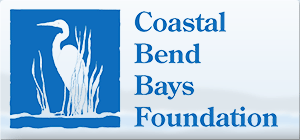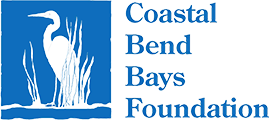ALL Coastal Issues Forums (CIFs) are made possible by the Coastal Bend Bays & Estuaries Program, always FREE, and open to the public – NO RSVP REQUIRED! CIFs are designed to bring together diverse community interests to identify Texas Coastal Bend concerns and seek solutions as well as educate our community about programs and opportunities all in a non-biased atmosphere.
Join us Monday, April 14th, 5:30pm-7:00PM
Networking ~ Free Food ~ Open to the Public ~ Interactive
Del Mar College Center for Economic Development
3209 S. Staples., Corpus Christi, TX 78411
5:30pm – Light snacks & Networking (Food Courtesy of HEB)
6:00pm – 7:00pm – Interactive Presentation & Questions
PLEASE JOIN US – FREE FOOD COURTESY OF HEB, NETWORKING, & HEAR FROM ENVIRONMENTAL EXPERTS! Are you familiar with the steps to protect air quality in the Coastal Bend and/or what is required to meet regulations for building and operating? Even if your answer is yes, join us at this CIF to gain valuable insights from environmental experts Sharon Bailey Murphy, Executive Director of the Coastal Bend Air Quality Partnership, and Christine Magers, Ecology Program Lead at Balcones Field Services. They’ll cover key measures, air permit requirements, voluntary emission reductions, and the coordination needed for environmentally responsible development in our region.
Murphy will discuss how understanding the regulatory requirements to operate in the Coastal Bend Air Shed is essential. Prevention of Significant Deterioration (PSD) plays a key role in safeguarding our air quality. Our community has implemented and continues to take significant measures to protect the air we breathe.
Magers will discuss the layers of regulatory oversite, coordination, and permitting needed to develop or improve property for projects that support environmentally responsible development in our local area. We’ll also discuss the opportunities for public involvement during the regulatory process and give tips for constructive comments.
Presenters & Presentation Descriptions:
Meet Sharon Bailey Murphy: Sharon Bailey Murphy, MPA, CHMM, REM is the Executive Director of the Coastal Bend Air Quality Partnership. She is a twenty-five-year environmental professional. Before
joining CBAQP, Mrs. Murphy served the City of Corpus Christi for thirteen years, managing internal and external Environmental Affairs, where she oversaw initiatives that promote environmental stewardship and sustainability and was the City point of contact for all federal, state and local environmental initiatives such as the TCEQ air quality monitoring program. Sharon is a graduate of the Texas A&M University – Corpus Christi and holds a Bachelor of Science Degree in Biology with a minor in Chemistry
and an MPA in Organizational Leadership from the University of Arizona Global Campus.
Sharon is very active in her community, including holding several leadership roles.
Meet Christine Magers: Christine Magers, CWB, has been assisting public and private clients for over 18 years providing regulatory permitting and National Environmental Policy Act (NEPA) services across the U.S. for waterfront and inland projects. Her experience includes NEPA analysis through categorical exclusion (CE), environmental assessment (EA), environmental impact statement (EIS); Clean Water Act (CWA) and Rivers and Harbors Act (RHA) Section 408/404/401/10 permitting; feasibility studies; and wetland delineations and mitigation. She has also served as the lead or assisted with delineation projects to identify the jurisdictional Waters of the U.S., including wetlands, on properties for development of infrastructure and/or in support of NEPA work. Her Section 10, 404, and 408 permitting experience includes municipal, ports, rail, road, pipeline, and energy related project development projects.
Balcones Field Services is a certified woman-owned (WBE) and small business enterprise (SBE) consulting firm with offices in Texas and Oklahoma. We pride ourselves on our firm‘s unique ability to support the full project life-cycle including planning, staffing, permitting, construction inspection and integrity services, and compliance and monitoring support through project completion. We also provide expertise in wetland delineation and mitigation, regulatory permitting, NEPA, linear facility routing analysis including expert witness testimony, and UAS (Unmanned Aerial Systems) aerial surveying, data collection and topographic mapping services, providing cutting-edge solutions for even the most complex environmental challenges.
This is a unique opportunity that you don’t want to miss where you will be enlightened, have a chance to ask questions and seek answers directly from the expert.
Check out some of the recorded CIF presentations on our YouTube! Click HERE!

To receive announcements on upcoming forums, please join our mailing list by clicking on the link below.





